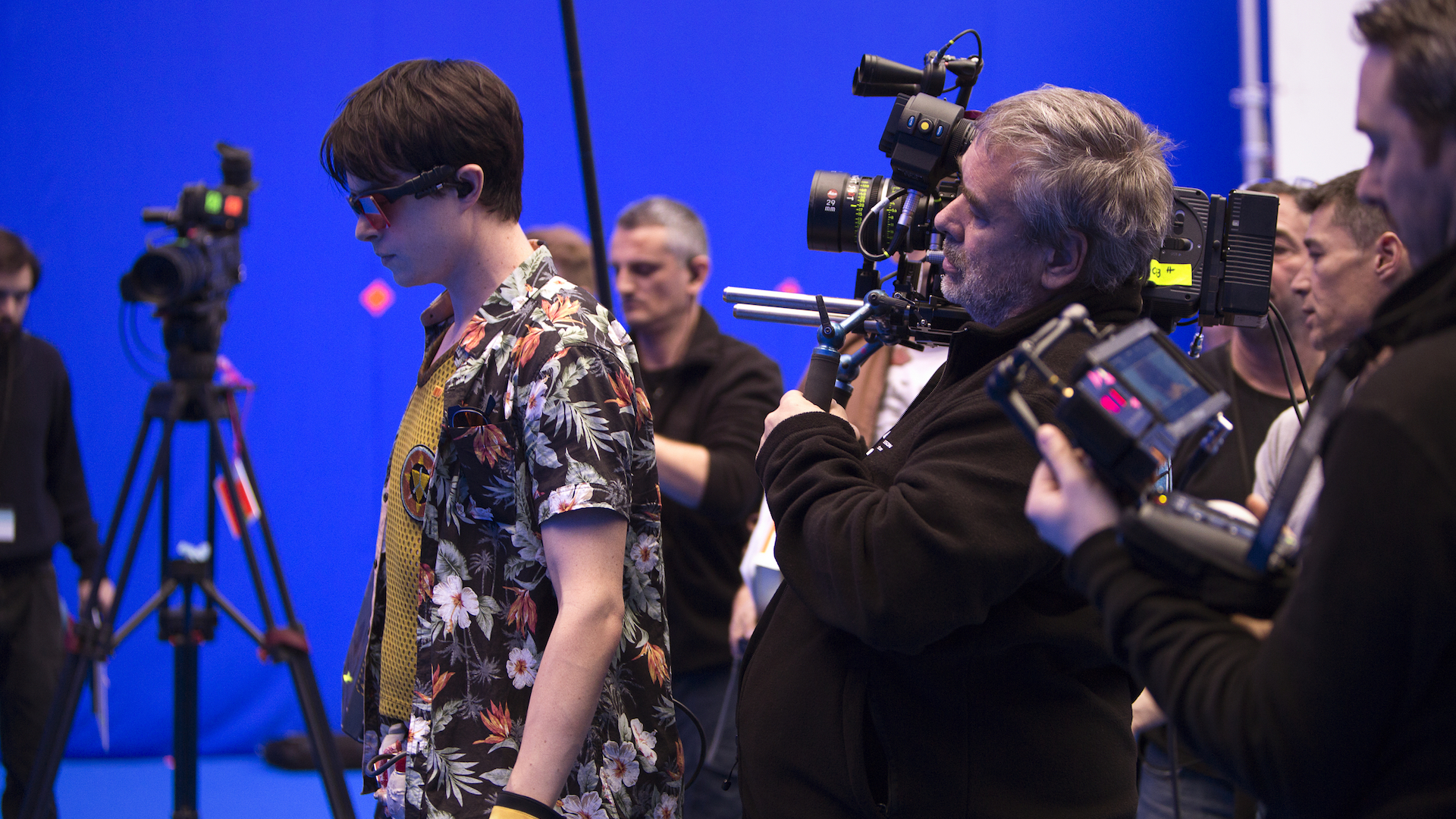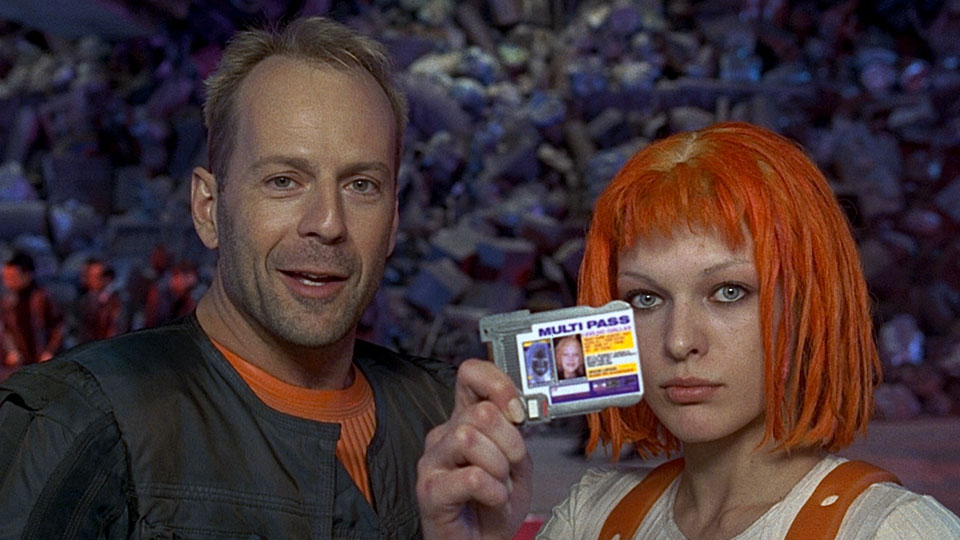Luc Besson talks streaming, viral videos and cinema tech
"Suddenly there’s 200 million views. It may be a very nice dog, but come on!"

The popcorn’s popping, the pick-n-mix bag overflowing and the bottomless coke ready to spill all over the guy sitting in front of you. Summer blockbuster season is well underway at your local cinema multiplex, with the LA bigwigs all clamouring for your cash.
But nestled between Nolan’s harrowing Dunkirk and Marvel’s delightful Spiderman: Homecoming is a blockbuster uniquely removed from the Hollywood hills. French auteur and the man behind classics such as The Fifth Element and Leon, Luc Besson is back to sci-fi with Valerian and the City of a Thousand Planets.
Though it takes its cues from the future-gazing French comic Valérian and Laureline, Besson has admitted that, at least in terms of real world technology, the film owes a debt to James Cameron’s Avatar, which rewrote the rule book on what could be achieved with a CGI world.
I’m amazed by the 3D conversions, they’ve made so much progress.
Luc Besson
But the debt doesn’t extend to Cameron’s pioneering 3D camera developments – for Besson, it’s still preferable to shoot in 2D first, and convert to 3D later. While that used to lead to less than satisfactory onscreen depth results, Besson now sings the praises of how well the conversion technology has progressed.
“I’m amazed by the 3D conversions, they’ve made so much progress,” he says.
“Shooting in 3D, the cameras are so heavy. I did some tests and I didn’t choose that path – I like my camera sometimes to be able to do shots where I am holding it in my hand, or on a shoulder. Shooting in 3D that’s just impossible, it’s too heavy.
“The conversion [with Valerian…] is very good. 3D, with some films it deserves it, it brings something. Most of the time it’s just a little extra bonus, but for me [a full 3D shoot] doesn’t work so much.”
Get daily insight, inspiration and deals in your inbox
Sign up for breaking news, reviews, opinion, top tech deals, and more.
Building Atmos(phere)
He may approach 3D somewhat cautiously then, but one cinema technology that Besson feels is truly additive though is Dolby’s Atmos speaker system, which allows for up to 128 audio tracks to play out in an encompassing surround sound setup, using positional data to let sounds play overhead, as well as in front and around a viewer.
“Dolby Atmos is amazing,” says Besson. “If you sit in Atmos it really gives you 10%, 15% more goosebumps! Especially in Valerian, the Atmos version is just crazy.”

Though he loves the Internet (it shares “the entire knowledge of the entire human race. It’s wonderful”) it’s unsurprising that such a visually meticulous director as Besson has little time for viral video culture.
“What makes me sad [about the way people use the Internet] is most of the time, what we’re watching on it is just a dog on the skateboard, and then suddenly there’s 200 million views,” sighs Besson.
“It may be a very nice dog, but come on! So the tools are amazing, but what we’re doing with them are not at the ‘top’ I think.”
From stream to dream
The rise of movie streaming services like Netflix has created another battleground for directors, and it’s one that’s split opinion. Netflix’s Okja from Bong Joon-ho, for instance, is fantastic and critically acclaimed, but riled the cinema industry’s influential old guard for having a same-day streaming launch as the big screen multiplex release. Director Christopher Nolan slammed the service for its “bizarre aversion to supporting theatrical films.”
But for Besson, the medium doesn’t matter, so long as it remains in service to the tale being told with the film.
“The most important thing is what you’re saying. It’s not so much what is the tool you’re using to say it, I’m more concerned about what we are saying. Is it a good story? Is it a good film? Then it doesn’t matter if you see it on a small screen or a big screen.”

However, if you’re waiting for Besson to re-imagine The Fifth Element for virtual reality, you’re most likely out of luck. It’s a medium he’s less enamoured with, as the very interactive nature of VR film makes a focussed, directed experience far more difficult to achieve.
“For me it’s two worlds apart. When you make a film or you write a book, it’s your expression. It’s not a pretentious way of saying it, it’s just that you express yourself, you make a painting,” says Besson.
“As soon as you give control to a player for example, it’s not you anymore – it’s about him. I’m happy for him, but it’s not my job. My job is really for me to just express myself. So it’s just not the same thing at all for me.”
The most important thing is what you’re saying. It’s not so much what is the tool you’re using to say it.
Luc Besson
The same goes for games: “What’s strange, sometimes when I watch people playing games and things, they think they’re controlling but they don't. Someone else has prepared everything, and they stay in the room, they are controlled by somebody else. Even if you have the feeling that you’re controlling the thing, you’re not.”
Whatever the medium, and whatever the filming technology used, at the very least you can always count on Besson to deliver something you’ve never seen before. Reportedly the most expensive indie film of all time with a budget of around $200m, Valerian and the City of a Thousand Planets is another journey into a futuristic domain rooted in a very European aesthetic.
“With Valerian..., the themes were developed inside; it’s not the ‘superhero’ type of film, it’s not a cheeseburger – something you eat and then forget,” says Besson.
“There’s lots of things inside. You can watch the film two, three, four, five times and you’ll still see new things; the theme of living together, protecting the planet.
“The last five or six years, all the series of superhero films with sequels five, six, seven – I’m bored, to be honest. I like it for twenty minutes then I fall asleep, because the stories are the same. I like things a little more...I want to dream.”

To celebrate the release of Valerian and the City of a Thousand Planets, Luc Besson is today behind the lens at TechRadar. Here’s what we’ve got in store for you:
- Luc Besson presents TechRadar
- From Verne to Valerian: how France became the home of sci-fi
- Luc Besson talks streaming, viral videos and cinema tech
- Star spangled glamour: making space travel cooler than ever before
- A history of time travel: the how, the why and the when
- 20 best sci-fi films on Netflix and Amazon Prime
- Amazing future tech from sci-fi films that totally exist now
Valerian and the City of a Thousand Planets is released in UK cinemas August 2nd, and is out now in the US.
Gerald is Editor-in-Chief of iMore.com. Previously he was the Executive Editor for TechRadar, taking care of the site's home cinema, gaming, smart home, entertainment and audio output. He loves gaming, but don't expect him to play with you unless your console is hooked up to a 4K HDR screen and a 7.1 surround system. Before TechRadar, Gerald was Editor of Gizmodo UK. He is also the author of 'Get Technology: Upgrade Your Future', published by Aurum Press.
